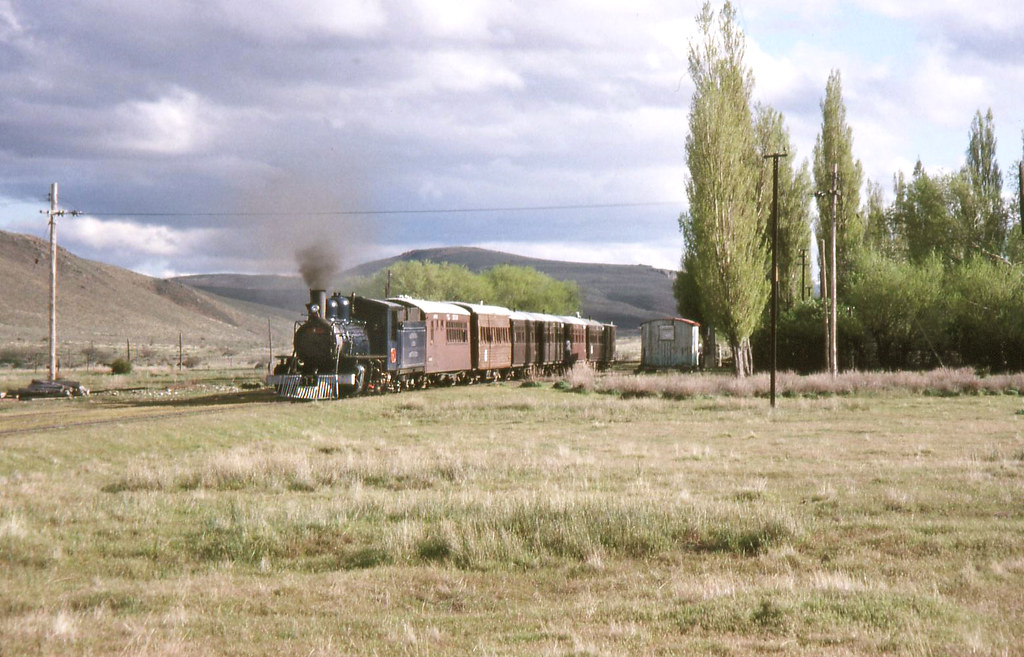|
The
Strangest Train Order
 Special train from Esquel at Leleque on the narrow gauge line between Ingeniero Jacobacci and Esquel in Argentina, 1995. Several years ago I was
on a special charter train in
Argentina on the steam-operated narrow gauge line to Esquel (known
popularly as
The Old Patagonian Express although the locals call it “La Trochita”). On the evening of the second day we completed
the last of the many run-bys and headed into Esquel for the night. On arriving at Esquel, one of the party, a
Swiss, became agitated as he had lost his wallet from out of his rear
pants
pocket. At the last run past he was
forced to answer the call of nature. He
walked away from the back of the train and, with one foot on each rail
(it was
narrow gauge don't forget) dropped his pants and proceeded to do his
business. With the run past finished, the
train whistled
off and began to move away towards Esquel. The
Swiss was forced to pull up his pants in a hurry and
run after the
train, just being able to climb on to the last car before it gathered
too much
speed. He surmised that the wallet had
dropped out of his pants while he was running for the train. The next morning we were
due to return over the same
piece of track. The train crew were
given their normal clearance with an additional order which read
something like
this: The order had to be
precise in that there are a lot of
cattle roaming this area and their droppings are to be seen all over
the area
but the sharp-eyed engine crew could tell the difference between human
and
cattle droppings and were able to pick out the precise location. The train stopped at the designated spot,
everyone piled out and the wallet was soon found and returned to its
thankful
owner. I can vouch for this
story as not only I was there but became
involved in
some of the translation from Swiss French to Latin American Spanish
explaining
the problem to the railway authorities.
The Old Patagonian
Express runs through near desert
country which is inhabited mainly by cattle. It
gets very cold at night and the small cars are heated
by wood-burning
stoves. There is never enough wood so at
the early morning run-pasts we would look out for dry cow pats which,
being
composed primarily of grass, burn quite well. We
quickly became adept at distinguishing the useful,
dried out ones
from the useless and messy ripe ones. Ottawa Valley Associated Railroaders, The Interchange February 2009. |